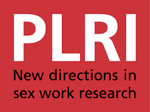This is an important study of the epidemiological literature on female sex workers. It shows us that for the first 30 years HIV affected and killed huge numbers of women who sell sex. Although the article does not make for happy reading we can take great comfort in knowing that the information here is about things that happenned before there was widespread access to ARV treatment. Because antiretroviral treatment both prevents people dying of HIV illnesses and prevents others contracting HIV from positive people who take ARVS the future of the HIV pandemic is very different to this past history. How different will depend, as the authors say, on changing laws around sex work and on expanding prevention programmes, (assuming that by ‘prevention’ they mean ‘prevention, care and treatment’) Cheryl Overs
Author Abstract
Female sex workers are a population who are at heightened risk of HIV infection secondary to biological, behavioural, and structural risk factors. However, three decades into the HIV pandemic, understanding of the burden of HIV among these women remains limited. We aimed to assess the burden of HIV in this population compared with that of other women of reproductive age.
We searched PubMed, Embase, Global Health, SCOPUS, PsycINFO, Sociological Abstracts, CINAHL (Cumulative Index to Nursing and Allied Health Literature), Web of Science, and POPLine for studies of female sex workers in low-income and middle-income countries published between Jan 1, 2007, and June 25, 2011. Studies of any design that measured the prevalence or incidence of HIV among female sex workers, even if sex workers were not the main focus of the study, were included. Meta-analyses were done with the Mantel-Haenszel method with a random-effects model characterising an odds ratio for the prevalence of HIV among female sex workers compared with that for all women of reproductive age.
Of 434 selected articles and surveillance reports, 102 were included in the analyses, representing 99 878 female sex workers in 50 countries. The overall HIV prevalence was 11·8% (95% CI 11·6—12·0) with a pooled odds ratio for HIV infection of 13·5 (95% CI 10·0—18·1) with wide intraregional ranges in the pooled HIV prevalence and odds ratios for HIV infection. In 26 countries with medium and high background HIV prevalence, 30·7% (95% CI 30·2—31·3; 8627 of 28 075) of sex workers were HIV-positive and the odds ratio for infection was 11·6 (95% CI 9·1—14·8).
Although data characterising HIV risk among female sex workers is scarce, the burden of disease is disproportionately high. These data suggest an urgent need to scale up access to quality HIV prevention programmes. Considerations of the legal and policy environments in which sex workers operate and actions to address the important role of stigma, discrimination, and violence targeting female sex workers is needed.
The World Bank, UN Population Fund.
Author:
Dr Stefan Baral Chris Beyrer and others

